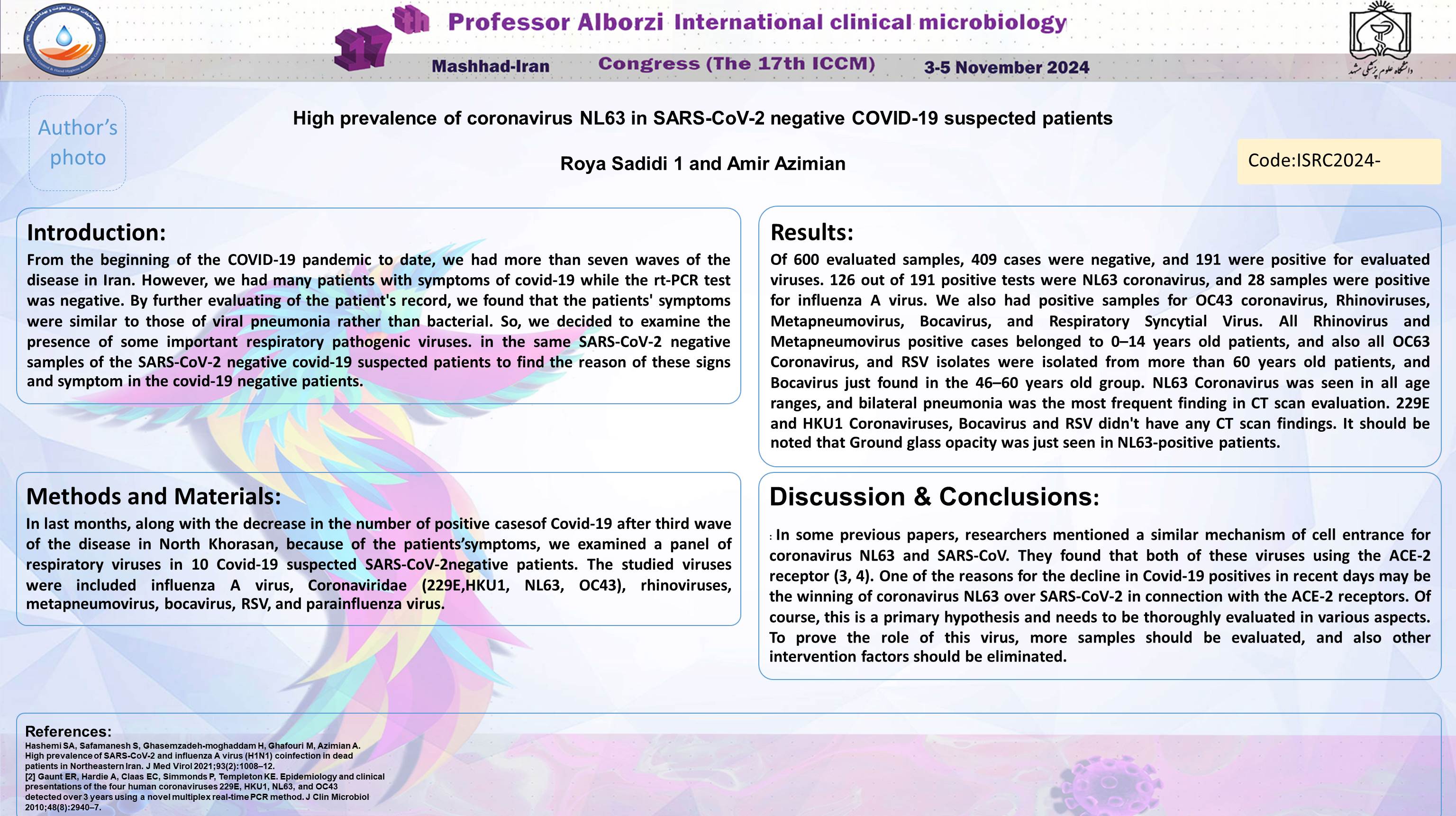High prevalence of coronavirus NL63 in SARS-CoV-2 negative COVID-19 suspected patients
کد: G-1201
نویسندگان: رویا سدیدی ℗, امیر عظیمیان ©
زمان بندی: زمان بندی نشده!
دانلود: دانلود پوستر
خلاصه مقاله:
خلاصه مقاله
In the last months of 2019, an increasing number of cases of pneumonia were reported in Wuhan, China. The etiology of this disease was unknown, and most affected patients had complicated respiratory symptoms related to respiratory illness, including cough, fever, headache, and breathlessness. At the same time, some showed respiratory failure, acute respiratory distress syndrome, shock, and death. More evaluation of dead patient samples and genome sequencing led to confirming a novel coronavirus, is named SARS-CoV-2 [1]. This virus is highly transmissible and, to date reported in most parts of the world, including Iran. To date, more than 680 million cases of disease and more than 6.8 million cases of death have been reported in the world, and near to 7.6 million cases of disease and more than 144000 cases of death have been reported in Iran [1]. From the beginning of the pandemic to date, we had seven waves of the disease in Iran. The first wave was in the spring of 2020, the second was in the last months of the summer, and the third wave was in the autumn. After the seventh wave in the last months of 2022, the incidence of covid-19 decreased significantly in most parts of Iran. However, we had many patients with symptoms of covid-19 while the rt-PCR test was negative. By further evaluating of the patient's record, we found that the patients' symptoms were similar to those of viral pneumonia rather than bacterial. So, we decided to examine the presence of some important respiratory pathogenic viruses, including influenza A virus, Coronaviridae (229E, HKU1, NL63, OC43), rhinoviruses, metapneumovirus, bocavirus, RSV, and parainfluenza virus [1,2] in the same SARS-CoV-2 negative samples of the SARS-CoV-2 negative covid-19 suspected patients to find the reason of this signs and symptoms in the covid-19 negative patients. The samples were selected from patients admitted between June 2022 to 2023 January in the referral hospitals of North Khorasan province, Iran.
کلمات کلیدی
SARS-Cov-2 Corona viridae
